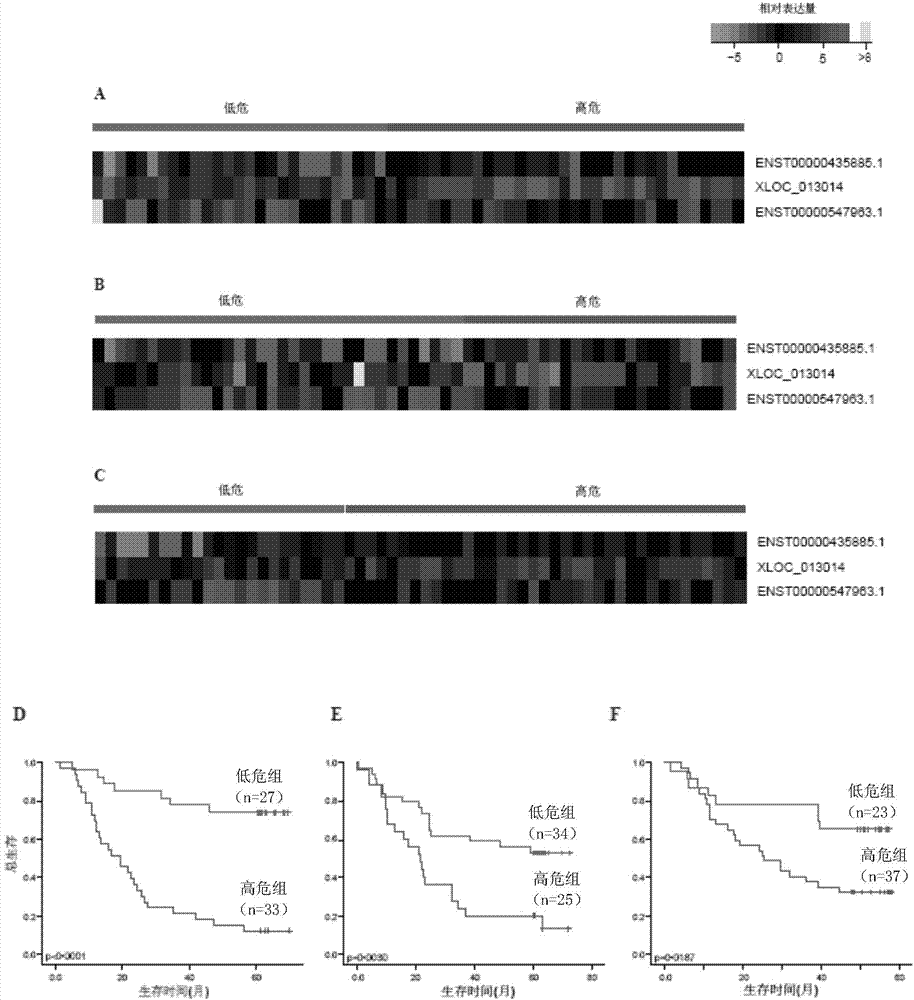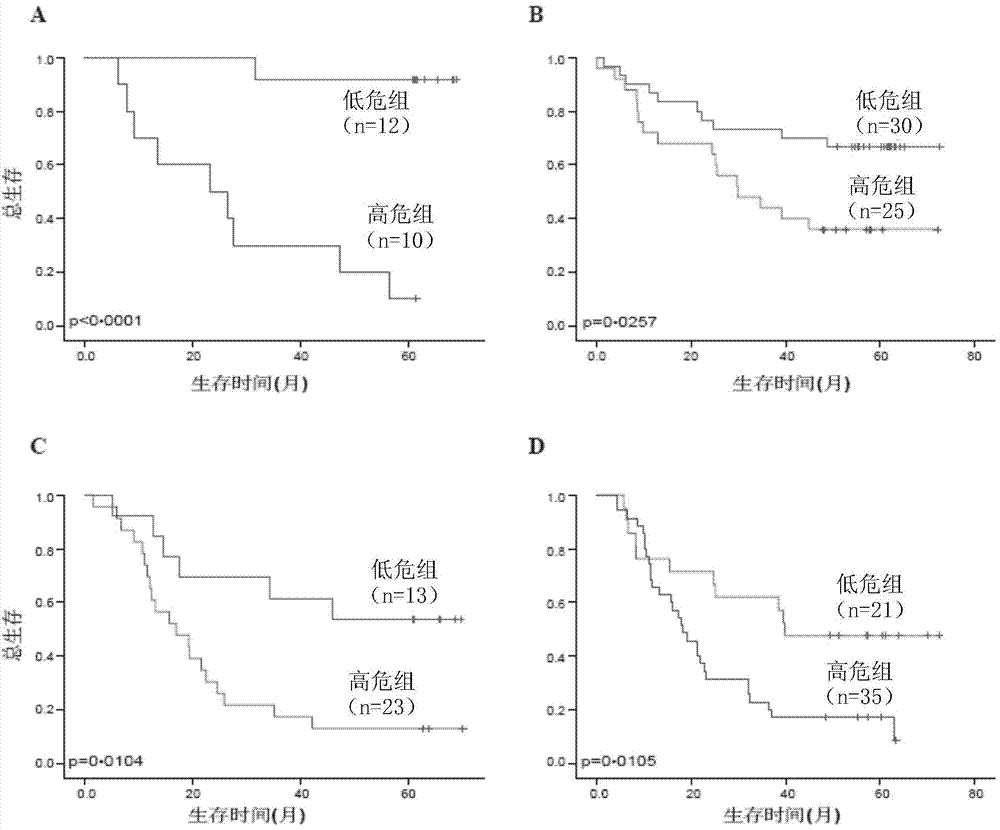Kit used for aided prediction on postoperative survival time of esophageal squamous cell carcinoma patients
A technology for esophageal squamous cell carcinoma and survival time, which is applied in the field of kits to assist in predicting postoperative survival time of patients with esophageal squamous cell carcinoma, and can solve problems such as troubles
- Summary
- Abstract
- Description
- Claims
- Application Information
AI Technical Summary
Problems solved by technology
Method used
Image
Examples
Embodiment 1
[0038] Embodiment 1, establishment of method
[0039] The cancer tissues and adjacent normal tissues of 119 esophageal squamous cell carcinoma (ESCC) patients with at least 5-year follow-up information were collected to detect the expression of lncRNA. All patients underwent esophagectomy in the Cancer Hospital of Chinese Academy of Medical Sciences from December 2005 to December 2007, and all of them were proved to be primary tumors after operation. Follow-up information was obtained through telephone follow-up. The last follow-up date was December 15, 2012. 46 people survived and 73 died. All samples obtained the informed consent of the patients. No patient underwent chemoradiotherapy before surgery. Tissue samples were quickly frozen and stored in liquid nitrogen at -80°C after resection. A small part of each specimen was taken out for paraffin embedding, sectioning, routine HE staining, and pathological examination. Tumor histology was assessed by two independent patho...
Embodiment 2
[0049] Embodiment 2, the application of method
[0050]The first group of samples: the cancer tissue and adjacent normal tissue of 60 patients with esophageal squamous cell carcinoma (ESCC) were collected; all patients underwent esophagectomy at the Cancer Hospital of the Chinese Academy of Medical Sciences from December 2005 to December 2007. It was proved that they were all primary tumors; the follow-up information was obtained through telephone follow-up, and the last follow-up date was 2012-12-15; all samples obtained the patient's informed consent; no patient underwent radiotherapy and chemotherapy before surgery; tissue samples were quickly collected after resection Frozen and stored in liquid nitrogen at -80°C, a small part of each specimen was taken out for paraffin embedding, sectioning, conventional HE staining, and pathological examination. Tumor histology was identified by two independent pathologists. The ratio of cells was greater than 60%, and no tumor cells wer...
PUM
 Login to View More
Login to View More Abstract
Description
Claims
Application Information
 Login to View More
Login to View More - R&D
- Intellectual Property
- Life Sciences
- Materials
- Tech Scout
- Unparalleled Data Quality
- Higher Quality Content
- 60% Fewer Hallucinations
Browse by: Latest US Patents, China's latest patents, Technical Efficacy Thesaurus, Application Domain, Technology Topic, Popular Technical Reports.
© 2025 PatSnap. All rights reserved.Legal|Privacy policy|Modern Slavery Act Transparency Statement|Sitemap|About US| Contact US: help@patsnap.com



